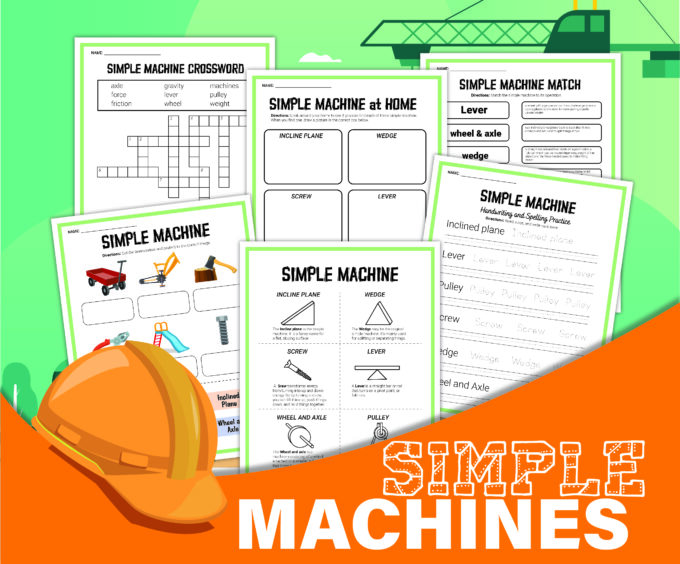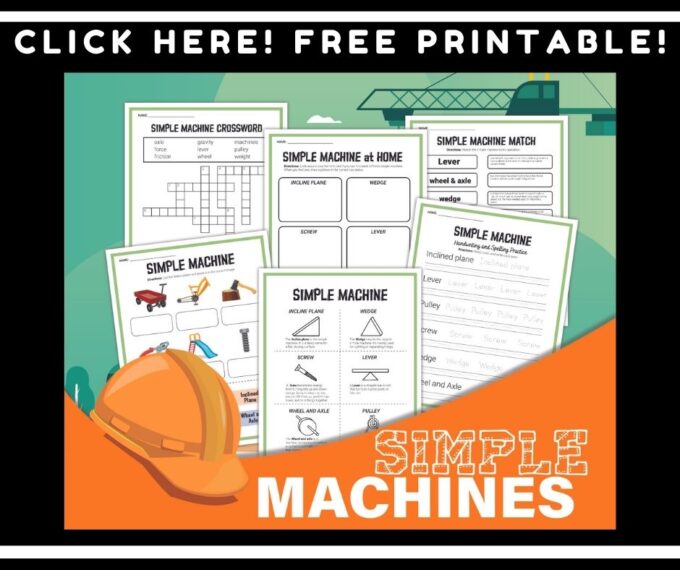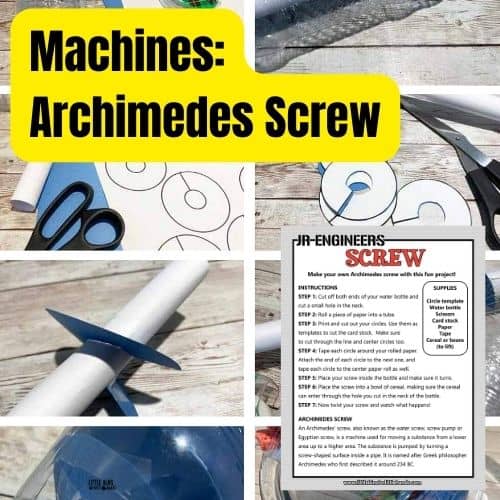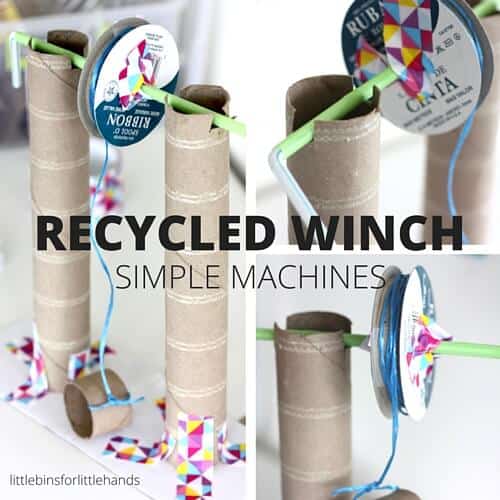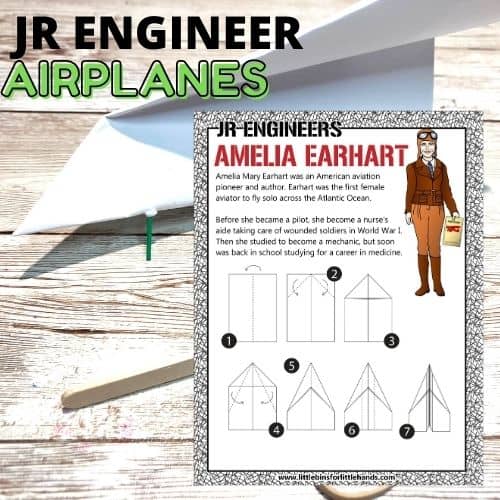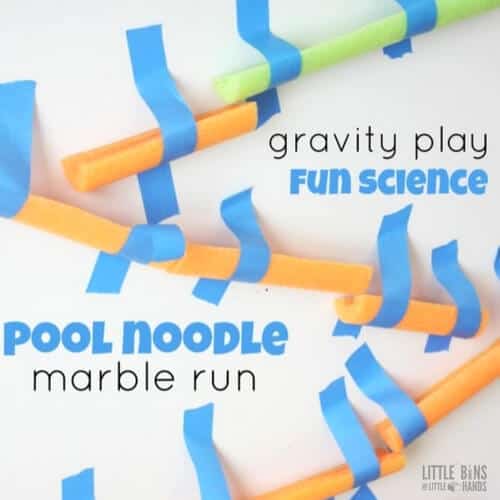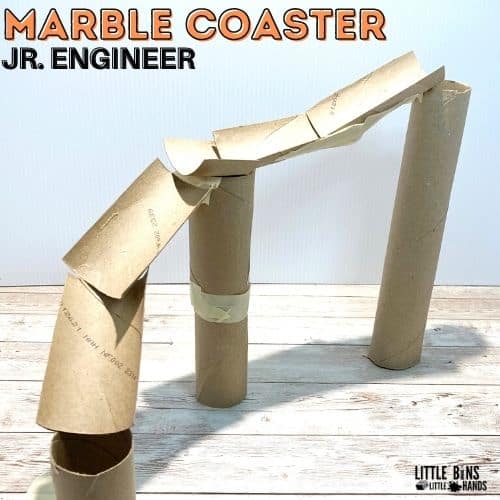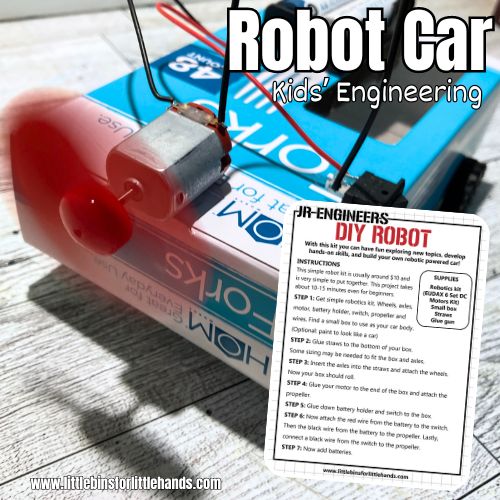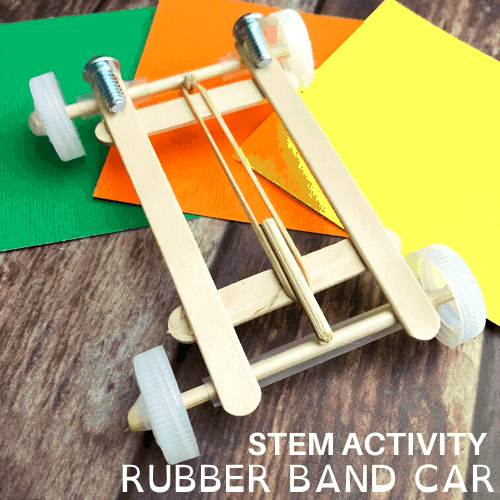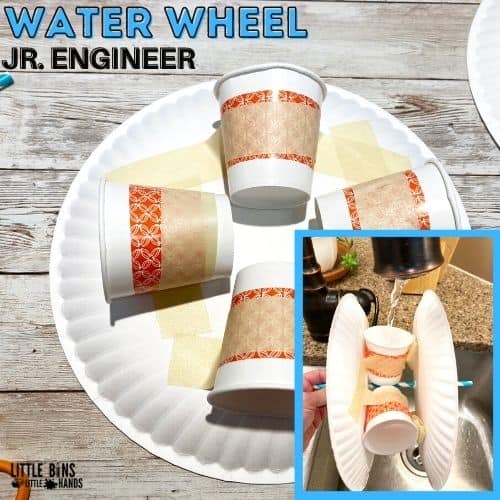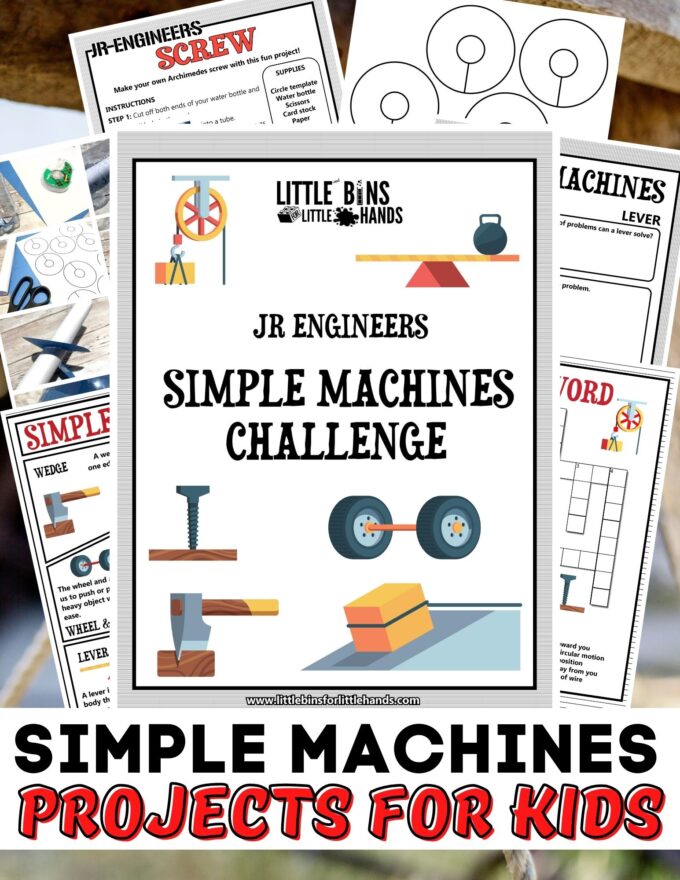These simple machine projects are an easy and hands-on way for kids to learn the basics about the science behind simple machines! Learn about the six simple machines, and how they make work easier. Plus, everyday examples of simple machines. Then design and build your own simple machine with one or more of these fun engineering projects.
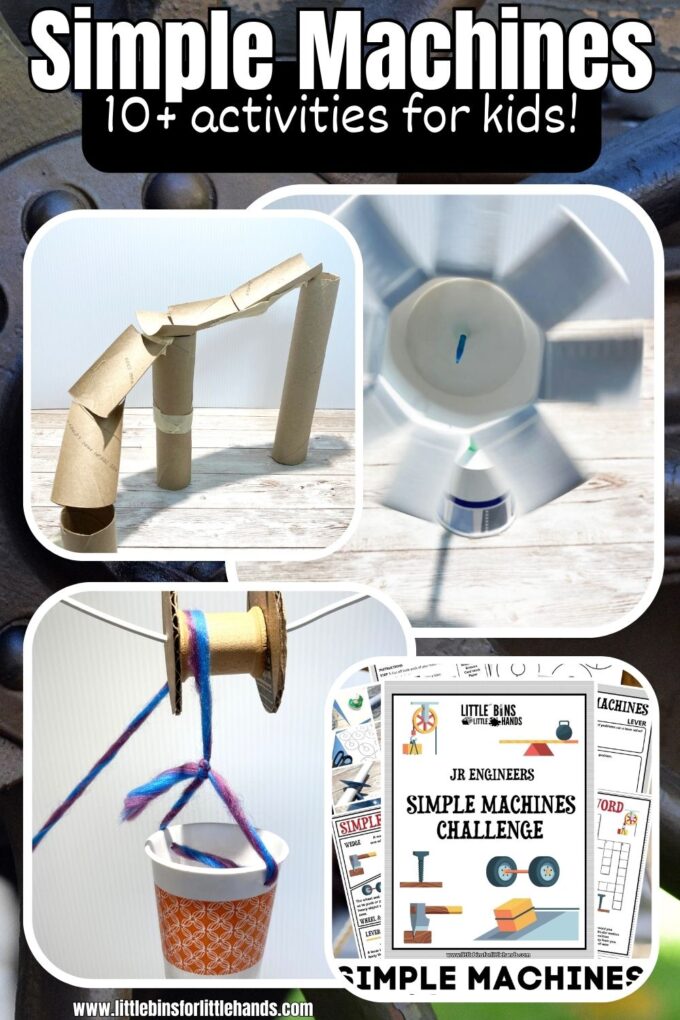
Explore Simple Machines For Kids
Building simple machines with kids is a great way to show them how stuff works! These simple machine projects are truly easy STEM activities with big impact!
Using recycled items or cheap supplies to make cool things allows awesome STEM challenges to be accessible to ALL kids! Plus, any activity that uses recycled materials is great for the environment!
Building simple machines with kids is tons of fun and gives them a great chance to troubleshoot problems and come up with creative solutions. Check out our easy simple machine project ideas below!
Add to the learning with these printable simple machine worksheets!
What Are Simple Machines?
Simple machines are basic mechanical devices that help make tasks easier by manipulating forces. They are often used to multiply, redirect, or change the direction of forces. Simple machines provide mechanical advantages, allowing us to perform work with less effort.
There are six main types of simple machines; lever, wheel and axle, pulley, incline plane, wedge, and screw. These six simple machines are often combined in various ways to create more complex machines that serve specific purposes.
Simple machines play a fundamental role in engineering and everyday life, as they allow us to accomplish tasks more efficiently and with less effort by taking advantage of mechanical advantages.
Watch the Video:
How Do Simple Machines Make Work Easier?
Simple machines make work easier by altering the force needed to perform a task. They provide a mechanical advantage, which allows the user to achieve the same amount of work with less effort or to perform more work with the same effort.
Simple machines can reduce the amount of force needed to lift or move heavy objects. For example, using a lever, such as a crowbar, allows you to lift a heavy object by applying a smaller force at the other end of the lever.
Simple machines can change the direction of a force. For instance, pulleys redirect a force applied downward into an upward movement, making it easier to lift an object.
Some simple machines, like inclined planes, allow you to apply a force over a longer distance. This reduction in force is compensated for by the increased distance traveled. Ramps are an example of this principle.
By using mechanical advantage, simple machines can multiply the input force. Gears, for instance, can increase or decrease the speed of rotation and torque (rotational force) in machines, allowing you to perform tasks more efficiently.
Simple machines enhance our ability to perform work by altering the force required or changing the direction of the applied force. They are essential tools in various fields, from construction and manufacturing to everyday tasks like opening a door or using a wrench. Understanding how simple machines work can help people find more efficient ways to accomplish tasks and solve problems.
6 Simple Machines
The 6 simple machines are:
1. Lever
A lever is a rigid bar or beam that pivots around a fixed point called the fulcrum. Levers are used to lift heavy loads or move objects. Examples include a seesaw, a crowbar, and a wheelbarrow.
2. Wheel and Axle
The wheel and axle consist of a large wheel (the wheel) attached to a smaller rod (the axle) that runs through its center. This simple machine is used to reduce friction and make it easier to move objects. Examples include car wheels and doorknobs.
3. Pulley
A pulley consists of a wheel with a groove that a rope or cable can run through. Pulleys are used to lift heavy objects by redirecting the force needed to lift them. Examples include flagpole pulleys, block and tackle systems, and blinds with pulley mechanisms.
4. Inclined Plane
An inclined plane is a flat surface that is slanted at an angle. It allows you to lift a heavy object by applying a smaller force over a longer distance. Examples include ramps, stairs, and sloping driveways.
5. Wedge
A wedge is a triangular-shaped tool with a thin edge or pointed tip. It is used to separate, split, or hold objects in place. Examples include knives, axes, doorstops, and chisels.
6. Screw
A screw is a cylindrical rod with ridges (threads) wrapped around it. Screws are used to hold objects together or to move objects vertically. Examples include screws in hardware, jar lids, and bottle caps.
Examples of Simple Machines
Simple machines are important for many everyday tasks and can be found in various forms. Here are some examples of simple machines in everyday life:
- Seesaw: A seesaw is a classic example of a lever. It consists of a rigid beam (the lever) balanced on a pivot point (the fulcrum). Levers are also found in tools like scissors and pliers.
- Bicycle Wheels: The wheels on a bicycle or car are wheel and axle systems. They allow the vehicle to move more efficiently by reducing friction and distributing the force over a larger area.
- Elevator: Elevators use pulley systems to lift and lower loads. In your home, curtain rods with pulley mechanisms can make opening and closing curtains easier.
- Ramp: A ramp is an example of an inclined plane. It makes moving heavy objects up or down easier by reducing the required force. Wheelchair ramps, stairs, and sloping driveways are common examples.
- Axe: An axe is an example of a wedge, a triangular-shaped tool often used for splitting or cutting. Knives can also be a wedge.
- Screw: Screws are used to hold things together or to lift heavy loads. Everyday examples include screws in hardware, jar lids, and bottle caps.
- Gears: Gears are used in many mechanical devices to transfer motion or change the speed and direction of rotation. They are found in bicycles, clocks, and car transmissions.
- Window Blinds: The combination of a wheel and pulley can be found in systems like a flagpole or window blinds, where the wheel and pulley work together to raise or lower an object.
- Cam and Follower: Engines often use these to convert rotary motion into reciprocating motion. They can also be found in simple devices like printers or automatic pencil sharpeners.
- Tongs: Tongs use the principle of a lever to grasp and hold objects. Whether using salad, barbecue, or sugar tongs, they make picking up and handling items easier.
Get your free printable simple machine worksheets!
Simple Machine Projects
These simple machine projects for kids can be adapted for different age groups and skill levels. Great for hands-on learning, while helping kids grasp the concepts of mechanical advantage and how simple machines make tasks easier.
Click on each project for full supply list and step by step instructions. Free printables included!
DIY Windmill
A windmill is also a simple machine that illustrates a wheel and axle. The wind blows on the cups or blades (the paper wheel), which turns the axle (the straw)
Archimedes Screw
Make your own Archimedes screw inspired by Archimedes himself. All you need are a few simple supplies for this fun simple machine project.
Balloon Powered Car
Build a car powered by a balloon. Then experiment with the design to make it go faster or farther.
Candy Gears
Build a working model of a gear train using candy corn and observe how turning one gear affects the other.
Catapult
Create a simple lever-based catapult using craft sticks, a plastic spoon, and rubber bands. Launch small objects like cotton balls or pom-poms.
Also build…
Hand Crank Winch
Build a hand crank winch from recycled materials, and explore how you can use levers and wheel and axle to lift heavy objects.
Paper Airplane Launcher
Design an inclined plane launcher for paper airplanes. Test different launch angles for distance and accuracy.
Marble Run
Design a marble run machine using a combination of inclined planes, ramps, and even pulleys. Challenge yourself to create intricate paths for marbles.
Check out our marble run wall made from pool noodle pieces and cardboard tubes.
Pulley System
Create a simple pulley system to lift a small bucket filled with objects, such as marbles or coins.
Check out how to build…
Marble Roller Coaster
Build a small roller coaster using marbles, cardboard tubes, and tape.
Ramps
Ramps are a great example of an incline plane, and are fun for play and learning! Here are a few different ways you can use them…
Robot Car
Robot kits are awesome to play and learn with! Find out how to make a robot car at home or in the classroom for a fun simple machine project for all ages. It’s easier than you think!
Rubber Band Car
Here’s another fun way to build a car with a wheel and axle that doesn’t use a battery to make it move. Also check out how to make a rubber band car with LEGO bricks.
Water Wheel
A water wheel is a simple machine that uses a wheel and axle. A water wheel has levers attached to it. The axle represents the fulcrum.
What Is STEM For Kids?
So you might ask, what does STEM actually stand for? STEM is science, technology, engineering, and math. The most important thing you can take away from this, is that STEM is for everyone!
Yes, kids of all ages can work on STEM projects and enjoy STEM lessons. STEM activities are great for group work, too!
STEM is everywhere! Just look around. The simple fact that STEM surrounds us is why it’s so important for kids to be a part of, use, and understand STEM.
Interested in STEM plus ART? Check out all our STEAM Activities!
From the buildings you see in town, the bridges that connect places, the computers we use, the software programs that go with them, and compasses for navigation, STEM is what makes it all possible.
Helpful STEM Resources To Get You Started
Here are a few resources that will help you introduce STEM more effectively to your kiddos or students and feel confident yourself when presenting materials. You’ll find helpful free printables throughout.
More Awesome Engineering Projects For Kids
- Building Activities For Kids
- Easy LEGO Builds
- Self-Propelled Vehicles You Can Make
- Engineering Kits
- Fun Engineering Projects
Printable Simple Machines Pack For Kids
Explore six simple machines, including the wheel and axle, lever, screw, incline plane, pulley, and wedge, with easy-to-digest information and doable projects!
Realistic and time-friendly activities for demonstrating each of the six simple machines! Plus, the supplies are all common and easy to find!
What’s Included:
- 6 simple machines projects: One for each machine, including the wheel/axle, lever, wedge, screw, pulley, and inclined plane
- Instructions, pictures, and templates (if applicable) for each project
- Informational sheet on each simple machine with easy-to-digest information that is perfect for kids to read.
- A quick video to watch illustrating the different machines.
- Fun extras are perfect for early finishers, quiet time, or to send home to extend the learning.


